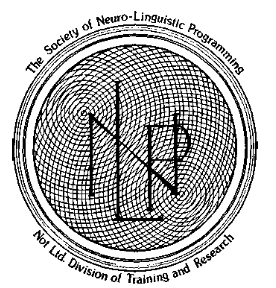That's an example of an extremely limited therapeutic goal. It's been five and a half years now since we worked with her. She's happy and everybody in her family is happy. But that's not an integrated approach. She still has two dissociated parts of herself. Using the metaphor of the alcoholic, she is still capable of bingeing.
Man: In her dreams you mean?
Yes, and there's some possibility that it could spill over into her waking behavior, too. My guess is that if her husband got involved with another woman again, that would break down all the barriers that we set up to sort her behavior. You can always use that kind of dissociation to sort someone's behavior, but you should realize the limitations of not achieving full integration.
You need to be able to select and contextualize behavior, so that you can respond differently in different situations. Overcontextualization results in extreme dissociation, and severely limited and inflexible behavior. Extreme dissociation can work adequately in limited and relatively stable environments, but it quickly becomes maladaptive and ineffective in the face of changing conditions.
The ideal situation is to have full integration, so that any behavior can be available in any context. Our goal for you and your clients is to be able to respond to changing conditions in generative and evolutionary ways. In order to do this, it is useful to integrate dissociations fully, so that you have all your resources available to you anytime and anywhere.
Note
It is a common experience with many people when they are introduced to Neuro–linguistic Programming and first begin to learn the techniques, to be cautious and concerned with the possible uses and misuses of the technology. We fully recognize the great power of the information presented in this book and whole–heartedly recommend that you exercise caution as you learn and apply these techniques of a practitioner of NLP, as a protection for you and those around you. It is for this reason that we also urge you to attend only those seminars, workshops and training programs that have been officially designed and certified by THE SOCIETY OF NEURO–LINGUISTIC PROGRAMMING. Any training programs that have been approved and endorsed by THE SOCIETY OF NEURO–LINGUISTIC PROGRAMMING will display on the cover of the brochure (or on the front page of the literature) a copy of the registered certification mark of THE SOCIETY OF NEURO–LINGUISTIC PROGRAMMING shown below:

THE SOCIETY OF NEURO–LINGUISTIC PROGRAMMING is a partnership made up of Not Ltd., a corporation, and Unlimited Ltd., a corporation, set up for the purpose of exerting quality control over
those training programs, services and materials claiming to represent the model of neuro–linguistic programming. Not Ltd.'s Division of Training and Research is the international headquarters and coordinator for all approved training programs in neuro–linguistic programming.
There are three levels of certification granted by THE SOCIETY OF NEURO–LINGUISTIC PROGRAMMING: Practitioner, Master Practitioner and Trainer. The certificates are granted with respect to the skill level of the trainee. Trainer represents the highest level of ability.
If you are considering seeking the services of a person who is skilled in neuro–linguistic programming we recommend that you find someone that has been appropriately certified. A directory of all certified individuals is maintained and distributed by Not Ltd. D.O.T.A.R.
If you would like further information on training programs, certification, research or publications on topics relating to neuro–linguistic programming please feel free to contact:
Bibliography
Bandler, Richard; and Grinder, John. Frogs into Princes. Real People
Press, 1979 (cloth $9.00, paper $5.50). Bandler, Richard; and Grinder, John. The Structure of Magic I.
Science and Behavior Books, 1975 ($8.95). Bandler, Richard; and Grinder, John. Patterns of the Hypnotic
Techniques of Milton H. Erickson, M.D. I. Meta Publications,
1975 (paper, $6.95). Bandler, Richard; Grinder, John; and Satir, Virginia. Changing with
Families. Science and Behavior Books, 1976 ($9.95). Cameron–Bandler, Leslie. They Lived Happily Ever After: A Book
About Achieving Happy Endings In Coupling. Meta Publications,
1978 ($8.95).
Dilts, Robert B.; Grinder, John; Bandler, Richard; DeLozier, Judith;
and Cameron–Bandler, Leslie. Neuro–Linguistic Programming I.
Meta Publications, 1979 ($24.00). Farrelly, Frank; and Brandsma, Jeff. Provocative Therapy. Meta
Publications, 1978 ($9.95). Gordon, David. Therapeutic Metaphors: Helping Others Through
the Looking Glass. Meta Publications, 1978 ($9.95). Grinder, John; and Bandler, Richard. Trance–formations: Neuro–Linguistic Programming and the Structure of Hypnosis. 1981
(cloth $9.00, paper $5.50). Grinder, John; and Bandler, Richard. The Structure of Magic II.
Science and Behavior Books, 1976 ($8.95). Grinder, John; and Bandler, Richard. Reframing: Neuro–Linguistic
Programming and the Transformation of Meaning. 1982 (cloth
$9.00, paper $5.50). Grinder, John; DeLozier, Judith; and Bandler, Richard. Patterns of
the Hypnotic Techniques of Milton H. Erickson, M.D. II. Meta
Publications, 1977 ($17.95). Lankton, Stephen R. Practical Magic: The Clinical Applications of
Neuro–Linguistic Programming. Meta Publications, 1979 ($12.00).
Trance–formations and Reframing can be ordered directly from: Real People Press, Box F, Moab, UT 84532.
All the other books above can be ordered directly from: Meta Publications Inc., P.O. Box 565, Cupertino, CA 95014.